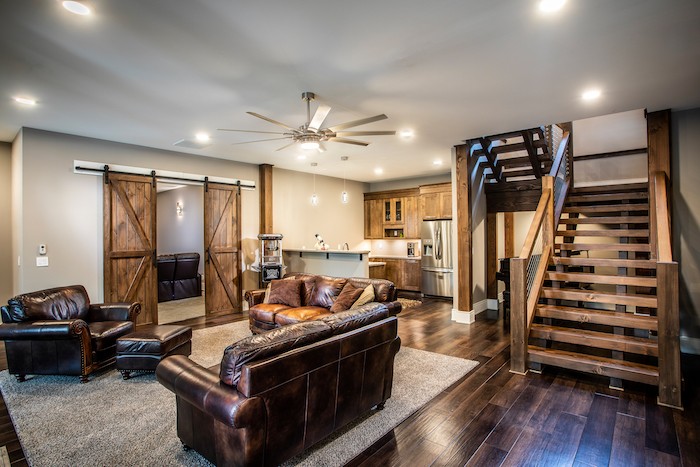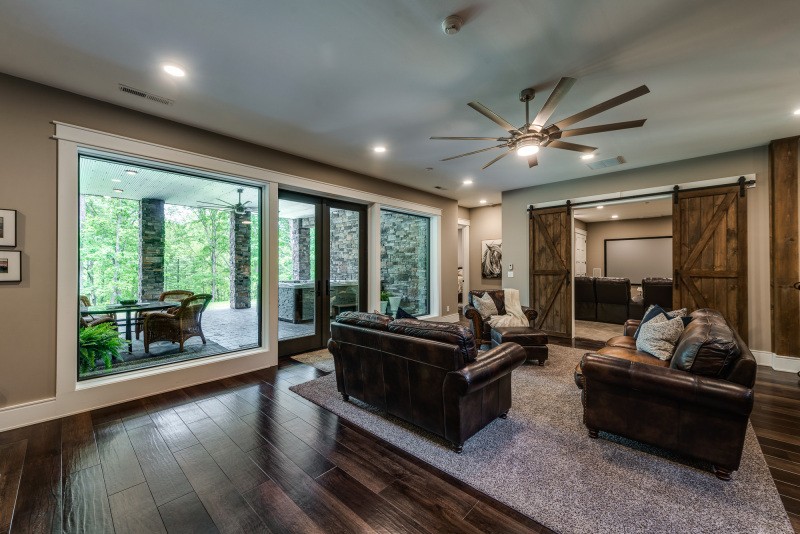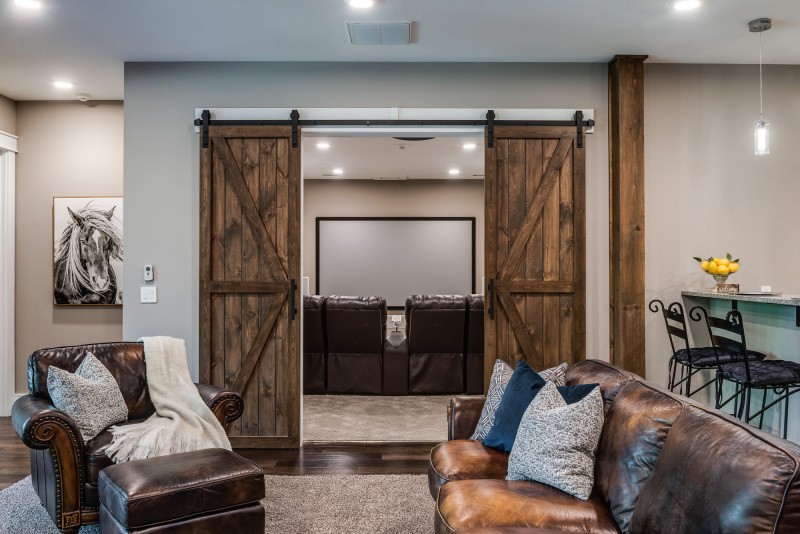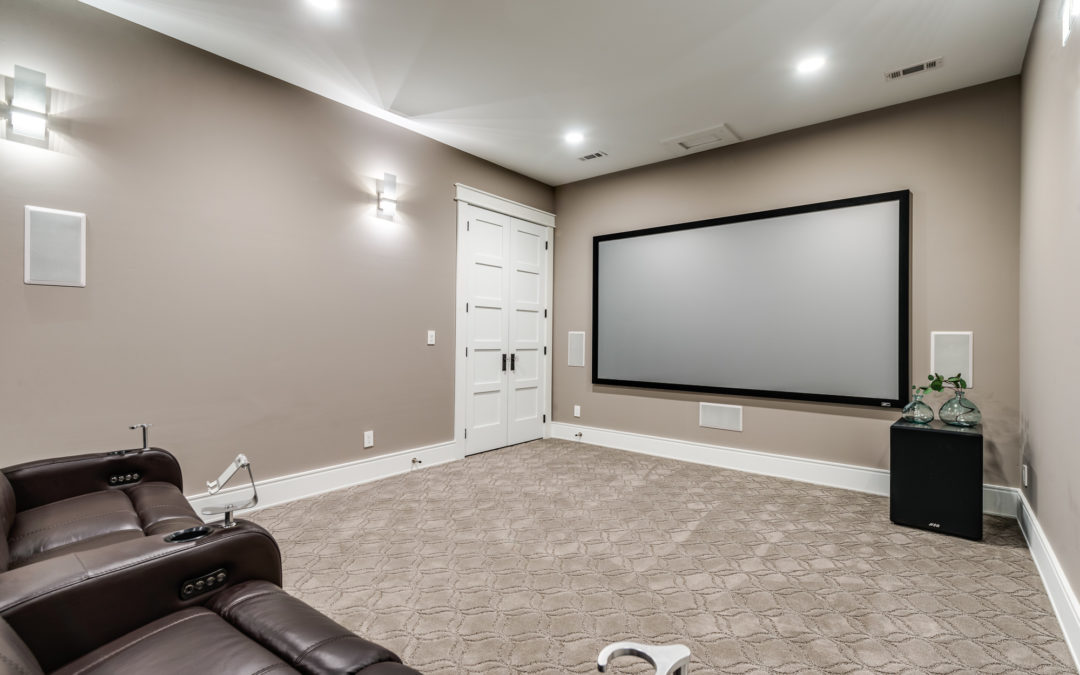The Teslia Theater
Honest Abe customers, the Greg and Sandy Teslia, built a theatre in their custom timber frame home. They chose a private area of the house – the 2,730-square-foot walkout basement – where they have a fitness room inside and a patio with a hottub and dining area just outside on a furnished patio.
Future plans for their basemment include a wine cellar, game room and safe room. Currently they enjoy movies together alone or when friends and family come to visit. The theater is particularly exciting for their grandchildren, who think of visiting their grandparents’ home, with its horse barn accessible to miles of riding trails at its idyllic setting at the edge of the Big South Fork National Recreational Area, as a vacation any time of the year.
Home Theater Tips
Home theaters are some homeowners’ solution to entertaining in style. The theater can become a place for kids, grandkids, teens and adults to settle in for a full feature movie or the ultimate binge watch of your favorite shows.
Whether you are streaming Netflix, playing your DVDs, renting that new theatrical release or just channel surfing, your home theater can be a great family destination for non-stop entertainment.
Before you grab the popcorn, soft drinks and giant boxes of candy, here are tips for building a theater space that produces the feel of being in an actual movie theater without ever leaving home.
Location
Select a dedicated space and plan It as the theater. Retrofitting space is often expensive and trying to create a multi-purpose space out of a theater can be difficult. We all know that multi-purpose places generally include distractions of smells, noise and light that distract from the show experience.
Lighting
Theaters need to be dark. Your theater will either need no natural light sources or it will require careful attention to completely closing off those sources of light. Watch for other light sources that reflect light, such as shiny countertops or appliances, door handles and hinges. Use flat and dark color paints in the theater area.
Lighting does need to be installed in the theater. It is best to use lights around the perimeter of the room and to keep those lights mostly behind the seating areas and away from the screen. Of course, lighting needs to include dimmer capability so that the room can darken and lighten without going completely out if you want that touch of ambient light.

Projection
Mount your projector in the ceiling. This keeps people from blocking the picture and it also makes the expensive projector more secure than if it is on a tabletop. In the alternative, you can project directly from your phone using an app or screen mirroring.

Room Size
The room itself should be at least 14 feet in length to allow the projector to throw a large enough picture on the screen. All of the equipment – from blue-ray players to streaming devices and computers – should be carefully mounted into an AV rack that is well ventilated to keep the equipment cool. A proper AV rack will have no doors or back to the cabinet and will have shelving that is grated metal to allow for as much air circulation around the equipment as possible.

Seating
Make it look like a theater. Building platforms for “tiered seating”, installing a snack bar outside the theater, investing in a popcorn maker are all things that make the theater feel like the perfect place to spend the evening.
While you can spend a small fortune on seating in your theater, you can certainly seat guests on loveseats, comfy chairs and recliners. Boosting rows by even 6 inches will give perfect viewing in the theaters that have more than one row.
Sound
You will want carefully placed speaker systems to enhance the theater experience, but you also will need to minimize household noise with soundproofing materials. Even the “quiet” sounds of the house, like a running dishwasher, can ruin the movie experience. Great sound can come out of small speakers, but the sound bounce will always be an issue in setting up a theater. Carpet and floor- to-ceiling drapery on all the walls are the easiest way to control sound bounce from your surround sound speakers. Even the cushions and throw blankets you might have on the chairs will help with sound bounce.
Original content provided to Honest Abe Log Homes by CSllc Consulting. Photos by Brandon Malone, Tennessee Photo Co.




